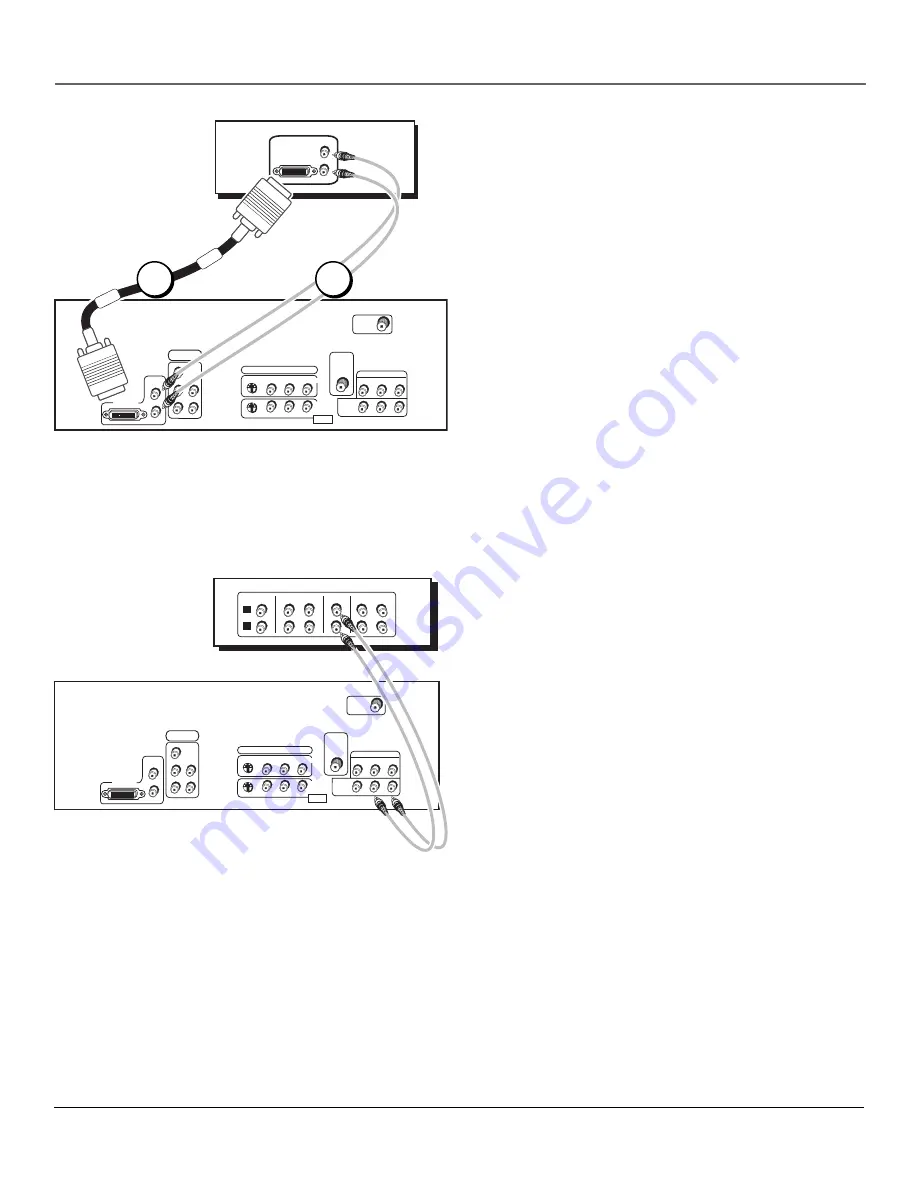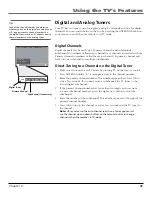
Connections & Setup
16
Chapter 1
P
R
DVI-HDTV
VID1
VID2
CMP1
COMPOSITE INPUTS
COMPONENT
INPUT
V
L
R
L
R
FIXED AUDIO
AUDIO
SUBWOOFER
AUDIO/VIDEO OUTPUT
S-VIDEO
V
R
R
Y
L
R
L
P
B
FOR FACTORY
USE ONLY
VARIABLE
V
R
HDTV
ANTENNA/
CABLE
ANALOG
INPUT
L
/
MONO
L
/
MONO
ANTENNA
DIGITAL
INPUT
IN
OUT
A/V RECEIVER
VCR
IN
TV
IN
OUT
TAPE
IN
CD
L
R
TV + DVI Component
To connect a DVI Component to your TV:
1. Connect the audio (white and red) cables to the DVI-
HDTV L and R audio jacks on the back of the HDTV and
to the audio output jacks on the DVI component.
2. Connect the video cable to the DVI-HDTV jack on
the back of the HDTV and to the DVI jack on the DVI
component.
P
R
DVI-HDTV
VID1
VID2
CMP1
COMPOSITE INPUTS
COMPONENT
INPUT
V
L
R
L
R
FIXED AUDIO
AUDIO
SUBWOOFER
AUDIO/VIDEO OUTPUT
S-VIDEO
V
R
R
Y
L
R
L
P
B
FOR FACTORY
USE ONLY
VARIABLE
V
R
HDTV
ANTENNA/
CABLE
ANALOG
INPUT
L
/
MONO
L
/
MONO
ANTENNA
DIGITAL
INPUT
DVI-HDTV
DVI-HDTV
AUDIO
L
L
R
DVI COMPONENT
TV+ A/V Receiver
These are two different ways your TV uses a component to
hear audio.
Connect audio cables to either the FIXED or VARIABLE
AUDIO L and R OUTPUT jacks and to the audio inputs on
the A/V receiver.
Note:
If you've connected your VCR or other
component to the FIXED outputs on the HDTV, use the
VARIABLE inputs for your A/V Receiver.
• FIXED provides fi xed-level audio output from the TV.
This audio output is ideal for connecting to an A/V
receiver that has its own volume control.
• VARIABLE provides variable-level audio output.
Volume levels can be controlled by the volume
controls on the TV and TV remote control.
1
2
Connect to either FIXED
or VARIABLE Output






































